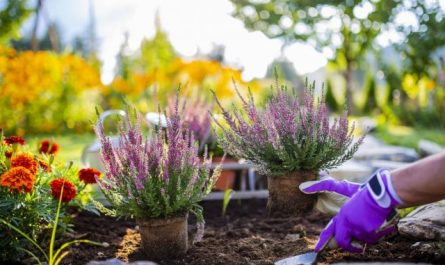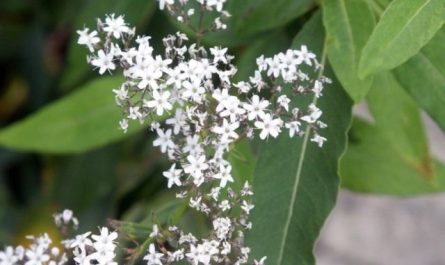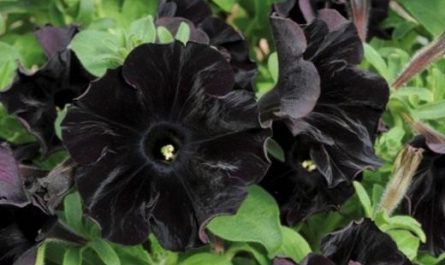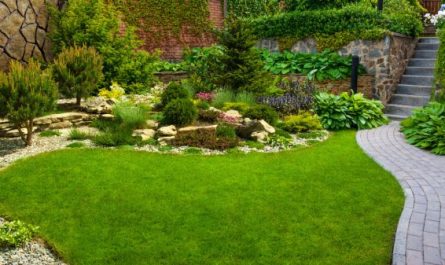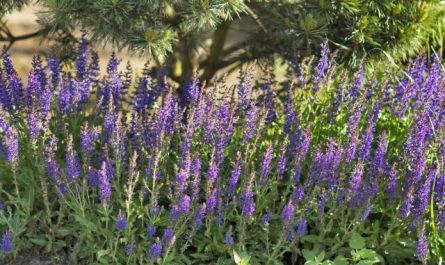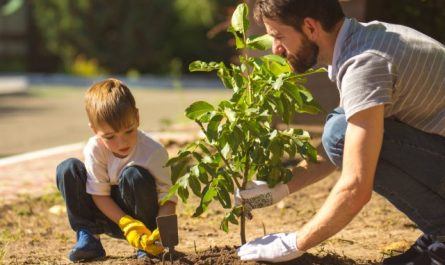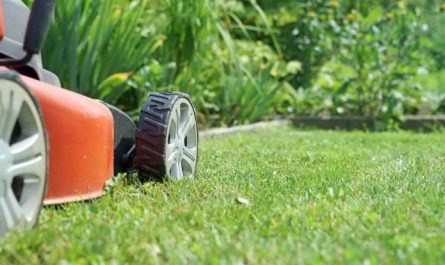The spread of moss on soft tiles is one of the most common problems of this type of covering. The debate about whether moss is so harmful to tiles and whether it is necessary to remove it is still ongoing. And the arguments of both sides are quite significant. But even if you like the appearance of moss on the roof of your house, sooner or later you will have to think about limiting its spread, since the area of green growth on the roof will only increase over time. Methods of combating moss can be very different, but you cannot do without labor-intensive work.
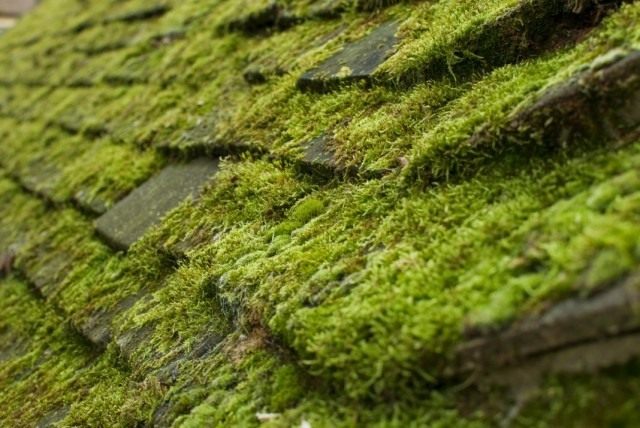
Despite the fact that moss is often a nuisance on other types of roofing, it is one of the main problems on soft tiles, which manifests itself in almost any location of the house on the north side of the slope. And for houses located in the forest, among trees, structures with insufficient insulation or incorrect calculation of the slope, moss is completely inevitable after a few years after laying over the entire area of the roof.
Contents:
How moss harms tiles and the factors of its appearance
Green roofs, in which plants are used as additional insulation, a means of effective thermal insulation of buildings, are at the peak of popularity today. But moss, which grows on a regular roof, cannot be attributed to this type of eco-coverings. Unlike specially created green roofs, here it is a parasitic plant along with lichens.
The destructive effect of moss on the roof is controversial: to some extent, such a coating plays the role of additional protection and protects the tiles from destruction. But the accompanying effects of moss and lichens on the materials and structure of the roof are negative, and all tile manufacturers without exception claim that such an aesthetic decoration should be disposed of as quickly as possible. And there are a number of reasons for this:
- Moss retains moisture.
- The growth affects the impact of negative temperatures and transitions from positive to negative temperatures, which all types of tiles, especially soft roofing, do not tolerate very well.
- Moss and lichens create an ideal environment for the development of bacteria, dust, other plants, as well as for the habitation of beetles, ants and other insects.
- Moss has almost no effect on the coating and structure of the tiles, which cannot be said about the reliability of the fastening. Most companies specializing in tiles claim that moss increases the gap between the roofing elements.
Of course, on the other hand, mosses absorb moisture that can penetrate the material and protect it from destruction under the influence of water. But such a “plus” does not outweigh the negative impact of mosses.
Moss and lichens are considered a specific problem of soft roofing. Despite all its beauty, this material requires a specific approach and special conditions. Roofing materials that have a porous, rough surface are most susceptible to moss and lichen damage. This applies not only to soft tiles, but also to cement-sand, composite, ceramic, ordinary metal tiles with a matte finish and even asbestos-cement sheets.
The factors that lead to the spread of moss are the same for all types of roofing. Mosses and lichens threaten the roof if the installation is not correct or the roof is excessively dirty, for example, in a forest or near large trees. The proximity of a swamp or a body of water increases the likelihood of their spread.
Moss usually appears on the northern and northwestern sides of the roof. The first signs of damage to the roof by lichens and moss can be noticed no earlier than 3, and most often 5 years after the material was laid.
Fighting moss is more difficult than preventing its appearance. Important preventive measures are preventing the accumulation of dirt, dust, leaves, sand on the roof, stagnant moisture, rotting of materials, and maintaining the quality of work. Prevention is the best method of control both in the case of building a house covered with soft tiles and when you choose other materials.
Even at the planning stage, it is worth considering measures to prevent the appearance of moss and lichen. Special copper roll materials in the form of tapes and thin copper mesh are installed under the tiles and ridge element before laying, but such “linings” are not very popular in our country yet.
If you are faced with the problem of moss and lichen on your tiles, you should not despair: there are many methods of control, and everyone can choose their own option.
Mechanical or physical methods of moss control
It is impossible to deal with moss by simply treating it with magic miracle preparations without removing the moss and dirt that has already appeared from the roof. Cleaning the tiles from dirt accumulation can be considered as the main method of combating the problem or as the first step to getting rid of moss forever. But in any case, such cleaning will have to be carried out.

There are two methods of mechanically removing moss from tiles:
- The most reliable, productive and popular is cleaning with a powerful mini-washer, the water jets under pressure in which will completely rid you of moss on the surface of the tiles and other dirt. It is important to remember that only high-power washers are used for these purposes and the work must be carried out not from the bottom up, but from the top down, directing the jets along the tiles, from the ridge to the eaves so that the jet does not overlap or under the material.
- Manual cleaning with brushes and water. This is a more labor-intensive method, and less productive. The thoroughness of the work determines not only whether all the formations will be removed, but also possible damage to the material itself. It is necessary to work with the roof very carefully, but at the same time as meticulously as possible, removing all dirt and plant residues from the roof. For washing, use hard and medium-hard brushes made of natural bristles only. First, the moss is removed by dry processing, and then the entire roof is thoroughly washed, getting rid of the remains of dirt and plants.
It should be taken into account that manual or mechanical cleaning of the roof from moss is a temporary measure and will allow you to get rid of this problem for a maximum of 1 year. If you want to limit yourself to mechanical treatments only, then be prepared for the fact that the tile cleaning procedures will have to be repeated regularly. If you want to get rid of the need to carry out a complex roof washing procedure at a height associated with danger and considerable physical exertion, then after cleaning it is necessary to take measures to prevent the appearance of moss and lichen in the future.
Copper “rescuers” from moss on the roof
In order to get rid of the problem of soft roof fouling without chemicals, you need to use copper-containing preparations or install a special device on the roof that enriches rainwater with copper ions and prevents the spread of moss. After all, copper is the simplest and most reliable assistant among the natural enemies of moss.
Special copper-containing products can be found in construction stores and specialized firms. Today, their range is expanding significantly and, despite their considerable cost, such products are highly effective in combating moss. Most often, such products are labeled as products intended to destroy moss.
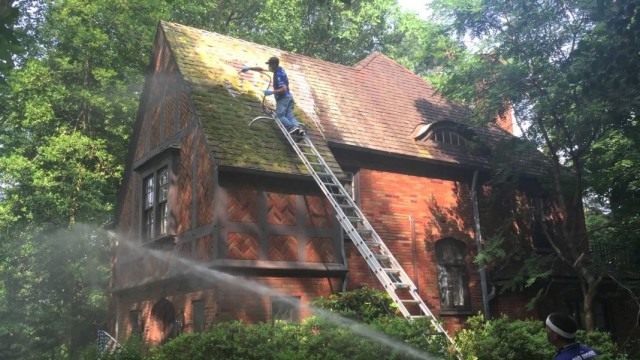
There are also so-called structural methods of processing associated with the use of copper. The simplest method is to install a copper brush, special boards or plates made of copper on the ridge. They are mounted on top, are quite expensive, require fastening with copper nails, but are very effective (this is how they fight the problem in Scandinavia).
Another universal and more accessible method is to combat moss on tiles using copper sulfate. This method works best after removing the moss by washing or manually. Spraying tiles with a copper sulfate solution allows you to prevent the appearance of moss for many years.
If you use this method of control as the main one without mechanical cleaning, then in order to cope with the problem, you will have to resort to several treatments and carry them out regularly in the future. Traditionally, the same concentration of the solution is recommended as when working with fruit trees – from 350 to 500 ml per 10 liters of water.
Chemicals and herbicides against moss on the roof
Manufacturers of soft tiles recommend using a solution of 1 part chlorine bleach mixed with 10 parts water to combat moss on the north side of the roof. This solution is applied to the roof surface with a sponge, always in the direction from the ridge to the eaves.
If necessary, large growths of lichen are first removed with soft brushes, and then the roof is treated with a solution. But the use of such a solution cannot but affect the plants growing near the house and can harm the ecology of the garden. In order for this method to be effective and not harm your site, all the liquid must be collected, monitor the drains and ensure that the solution does not splash onto the surrounding area during work.
In addition, bleach can cause damage to facade materials, windows, wooden structures. And the treatment will have to be carried out regularly, 2 times a year, in spring and autumn, on windless days with air temperatures from 5 to 15 degrees Celsius.
Much easier to use are special products designed to combat moss and lichen on the roof, many of which are biological products. Basically, such specialized compounds are produced in Scandinavian countries. They are applied with a sponge or sprayer, they work for up to 4 years and, if you choose the right product, are absolutely safe for the garden. However, it is still difficult to find them here, and the price makes you think about the feasibility of such a method.
To combat moss on the roof, you can also use any systemic herbicide intended for garden plants. Treatment with a solution of the preparation allows you to completely destroy the colony of moss and lichens. The method of treatment – spraying or manual washing – requires taking into account the possible harm to the body, taking protective measures and affects the surrounding areas (for example, you will not be able to use the terrace for several weeks).
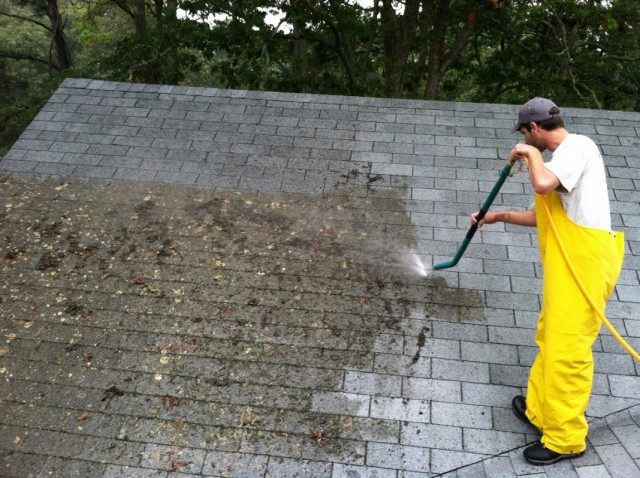
You can deal with moss and algae-cleaning products in your pool, but their impact on the ecology of your garden is even more destructive.
To protect a roof cleaned manually or with a wash, special antiseptics for ceramics, concrete and stone and various protective impregnations are suitable, but when using them, you need to take into account the type of roof. And there is always a risk of whitening the roof and damaging the aesthetics of the materials.
The spread of moss can be prevented by increasing the smoothness of the surface and improving water runoff by additionally coating the tiles with a special protective varnish or silicone impregnation (if the roofing material allows it).
